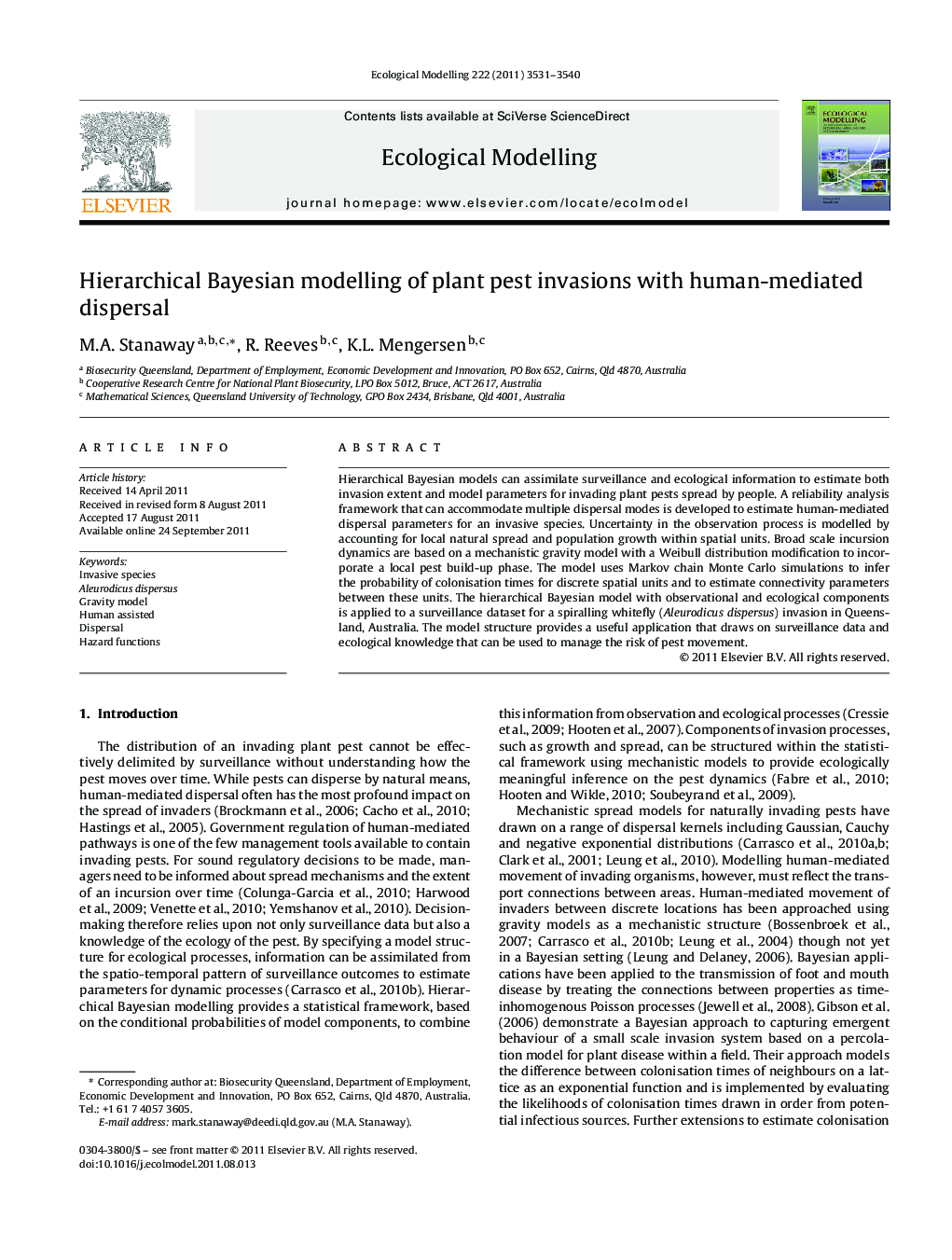| Article ID | Journal | Published Year | Pages | File Type |
|---|---|---|---|---|
| 4376811 | Ecological Modelling | 2011 | 10 Pages |
Hierarchical Bayesian models can assimilate surveillance and ecological information to estimate both invasion extent and model parameters for invading plant pests spread by people. A reliability analysis framework that can accommodate multiple dispersal modes is developed to estimate human-mediated dispersal parameters for an invasive species. Uncertainty in the observation process is modelled by accounting for local natural spread and population growth within spatial units. Broad scale incursion dynamics are based on a mechanistic gravity model with a Weibull distribution modification to incorporate a local pest build-up phase. The model uses Markov chain Monte Carlo simulations to infer the probability of colonisation times for discrete spatial units and to estimate connectivity parameters between these units. The hierarchical Bayesian model with observational and ecological components is applied to a surveillance dataset for a spiralling whitefly (Aleurodicus dispersus) invasion in Queensland, Australia. The model structure provides a useful application that draws on surveillance data and ecological knowledge that can be used to manage the risk of pest movement.
►► We develop a hierarchical Bayesian model for a human-mediated pest invasion. ►► A general reliability analysis is proposed to estimate multiple dispersal parameters. ►► Broad-scale dynamic structure is provided by a mechanical gravity model. ►► Information from imperfect surveillance is assimilated with the model information. ►► Uncertainty about incursion extent is shown by estimates of colonisation times.
